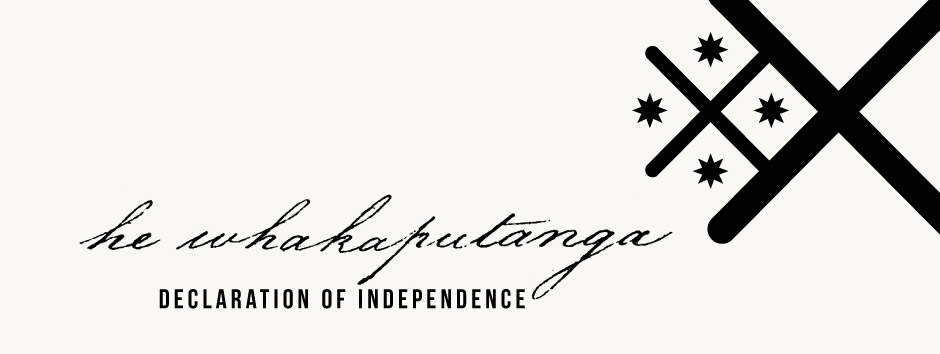Signing details
Pōmare II, who as a young man was known as Whiria, was an influential rangatira of Ngāti Manu and Ngāpuhi’s southern alliance. His mother, Haki, was the elder sister of Whētoi, also known as Pōmare or Pōmarenui. His father was Te Tautoro, a descendant of Rangiheketini and Hineira. When his uncle Pōmare was killed during a raid in Waikato in 1826, Whiria took the names Whētoi and Pōmare II, and emerged as the principal leader of Ngāti Manu.
As Angela Ballara notes, around 1815 missionaries described Pōmare II as 'graceful, well proportioned, strong, and attractive to women. He had several wives and children, including a boy aged about nine. He was already heavily involved in trading with European shipping, and eager for some European settlement in his area.' [1]
The desire for trade, coupled with historic inter-hapū conflict, sometimes resulted in disputes such as the ‘Girls’ War’. On 6 March 1830 on the beach at Kororāreka, a taua led by Ururoa and his northern-alliance allies engaged in a two-hour battle with Pōmare II, his cousin Kiwikiwi and others of Ngāti Manu. After this Pōmare II moved to Ōtūihu, where he was developing a strong pā for both defence and trade. He became a major trader of spirits, pork, potatoes and timber, and Ōtūihu soon rivalled Kororāreka as a centre of attraction for Europeans. It was the site of further conflict during the inter-hapū war of 1837.
Pōmare II signed He Whakaputanga on 28 October 1835. On 17 February 1840 he signed Te Tiriti o Waitangi; he also helped convince Te Ruki Kawiti and Te Tirarau to sign in May of that year. However, some of the government’s actions offended him, and despite remaining neutral during the 1845–46 Northern Wars, Pōmare II was arrested and his pā destroyed by British troops. He spent his last few years peacefully, and died in July or August 1850.
[1] Angela Ballara, ‘Pomare II’, from The Dictionary of New Zealand Biography, Te Ara – the Encyclopedia of New Zealand.


Community contributions